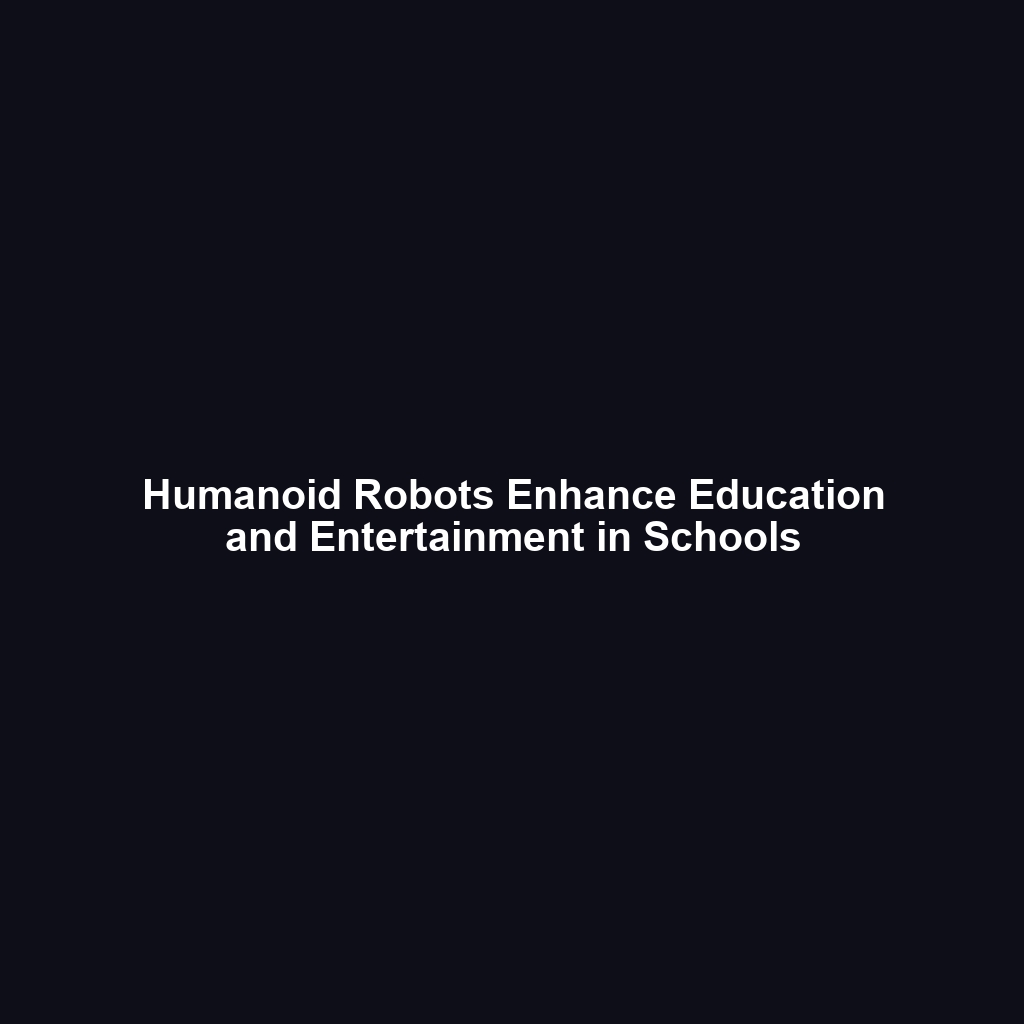Education and Entertainment: Robots in Schools and Entertainment Venues
Introduction
The integration of humanoid robots in education and entertainment represents a groundbreaking shift in how we engage with technology. These sophisticated machines are not just a novelty; they are becoming essential tools that transform learning experiences and enhance entertainment environments. This article explores the significance of robots in schools and entertainment venues, highlighting their impact within the broader context of humanoid robots. Keywords such as robots in education, robots in entertainment, and humanoid technology aim to elevate the discourse surrounding this fascinating intersection.
Key Concepts
At the core of the discussion around education and entertainment robots lies several key concepts:
- Human-Robot Interaction (HRI): This principle addresses how individuals communicate with humanoid robots, influencing their design and functionality in both education and entertainment.
- Social Robotics: The study of robots that can interact with humans in social contexts, crucial for applications in schools and entertainment venues.
- Adaptive Learning Technologies: Robots capable of personalizing educational experiences based on student interactions and feedback.
These concepts illustrate how robots in schools and entertainment venues exemplify advancements in the field of humanoid robots.
Applications and Real-World Uses
Humanoid robots are making significant strides in various fields. Here are some notable applications:
- Educational Robots: Robots like NAO and Pepper are used in classrooms to assist in teaching coding, mathematics, and languages, demonstrating how robots in education enhance learning.
- Entertainment Robots: Platforms such as RoboThespian perform at theaters and theme parks, showing how robots in entertainment engage audiences with interactive performances.
- Cognitive Development: Robots are employed in therapy settings to aid children with autism, illustrating their practical use in educational and emotional support within schools.
Current Challenges
Despite the promising applications of robots in educational and entertainment settings, several challenges persist:
- High Costs: The initial investment for humanoid robots can be prohibitive for many educational institutions.
- Technical Limitations: Current humanoid robots may struggle with complex tasks that require nuanced understanding and adaptability.
- Acceptance and Ethical Issues: The integration of robots raises concerns regarding dependency on technology and ethical considerations in their use.
Future Research and Innovations
The landscape of education and entertainment robots is continuously evolving. Anticipated innovations include:
- Advanced AI Integration: Future robots will leverage AI to dynamically adapt to individual user’s needs, improving educational outcomes.
- Enhanced Emotional Intelligence: Research aims to develop robots that can better understand and respond to human emotions, elevating their effectiveness in both education and entertainment.
- Collaborative Learning Environments: Next-gen robots are expected to facilitate group learning experiences, promoting teamwork among students.
Conclusion
The implications of education and entertainment: robots in schools and entertainment venues are profound, shaping a future where humanoid robots play a crucial role in both domains. Their application is not just a technological advancement but a step towards enhancing educational engagement and entertainment experiences. As we move forward, we must consider both the challenges and the innovations that lie ahead. For more insights into the fascinating world of humanoid robots, check out our articles on education technology and interactive entertainment.

Leave a Reply